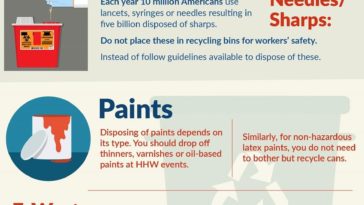Exactly How To Pick The Right Dumpster Size For Your Task: A Comprehensive Overview
Exactly How To Pick The Right Dumpster Size For Your Task: A Comprehensive Overview
Blog Article
Web Content By-Cabrera Berger
When starting a task that calls for a dumpster, the dimension you pick can considerably influence its performance and cost-effectiveness. Visualize having the ideal container that suits all your waste without being exceedingly huge or too tiny. All of it beginnings with understanding the nuances of your task and picking a dumpster dimension that aligns with your particular needs. So, before demo dumpster rental make a decision, think about the factors at play to make certain a smooth waste monitoring procedure from beginning to end.
Elements to Take into consideration
When deciding on the ideal dumpster dimension, there are a number of essential aspects to consider.
First, think about the kind of waste you'll be getting rid of. Different products may call for varying amounts of area, so understanding what you'll be putting in the dumpster is critical.
Next, evaluate the quantity of waste you expect to generate. If you underestimate the quantity, you may require to make several journeys to throw away whatever, which can be inconvenient and pricey. On the other hand, leasing a dumpster that's too large can cause unnecessary expenditures.
In addition, take into consideration the area where the dumpster will be placed. Make sure there's enough space for the dumpster to be supplied and gotten without any blockages.
Last but not least, think of any type of weight restrictions that may use. Going beyond the weight limit can cause additional charges or perhaps the refusal of service.
Dumpster Dimension Options
For picking the ideal dumpster dimension, it's necessary to have a good understanding of the offered choices. Dumpster sizes generally vary from 10 to 40 cubic backyards, with variants in between.
A 10-yard dumpster appropriates for little jobs like a garage cleanout or a little remodelling. If you're taking on a medium-sized job such as a kitchen remodel or a cellar cleanout, a 20-yard dumpster could be the appropriate option.
For bigger tasks like a whole-house restoration or business construction, a 30 or 40-yard dumpster could be more suitable to accommodate the quantity of waste generated.
When choosing a dumpster size, consider the amount and type of particles you anticipate to get rid of. It's much better to pick a slightly bigger size if you're not sure to avoid overfilling. Keep in mind, it's even more economical to rent out a dumpster that fits your needs instead of having to order an extra one.
Matching Size to Job
Optimally matching the dumpster dimension to your project is crucial for reliable waste monitoring. To identify the appropriate dimension, consider the scope and nature of your task.
For small family cleanouts or improvements, a 10-yard dumpster may suffice. These are normally 12 feet long and can hold around 4 pickup truck lots of waste.
For bigger jobs like remodeling numerous areas or clearing out a big estate, a 20-yard dumpster may be preferable. These are around 22 feet long and can hold roughly 8 pickup lots.
If you're tackling a major construction job or business remodelling, a 30-yard dumpster could be the best fit. https://residential-dumpster-rent53198.tokka-blog.com/31628612/determining-between-a-scrap-removal-service-and-a-do-it-yourself-cleanout-involves-weighing-elements-like-cost-safety-and-security-effectiveness-and-comfort are about 22 feet long and can suit about 12 pickup truck lots of debris.
Matching the dumpster dimension to your project ensures you have enough area for all waste materials without overpaying for extra capability.
Verdict
To conclude, picking the ideal dumpster size for your job is essential for effective waste disposal. By considering elements like the kind and quantity of waste, space schedule, weight limitations, and budget restrictions, you can ensure you have the ideal size dumpster for your needs. Make sure to match the dimension of the dumpster to the scope and nature of your task to prevent overspending on unnecessary expenditures.
